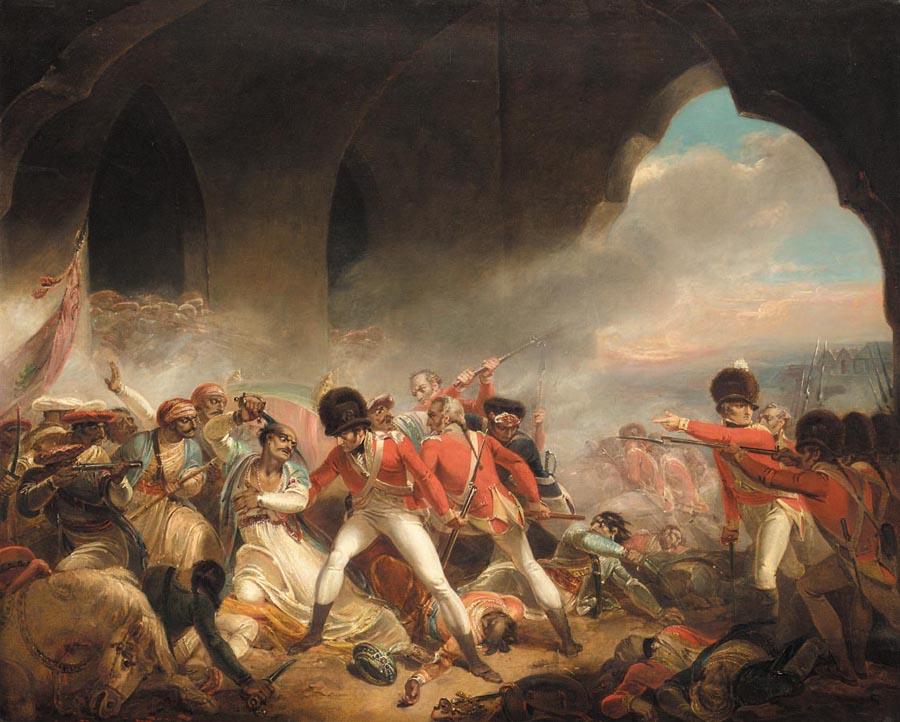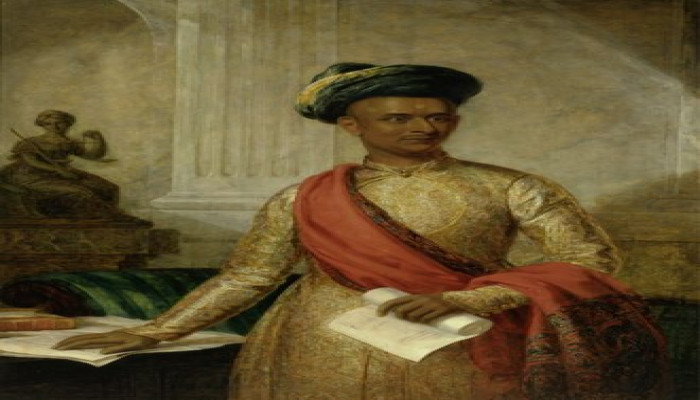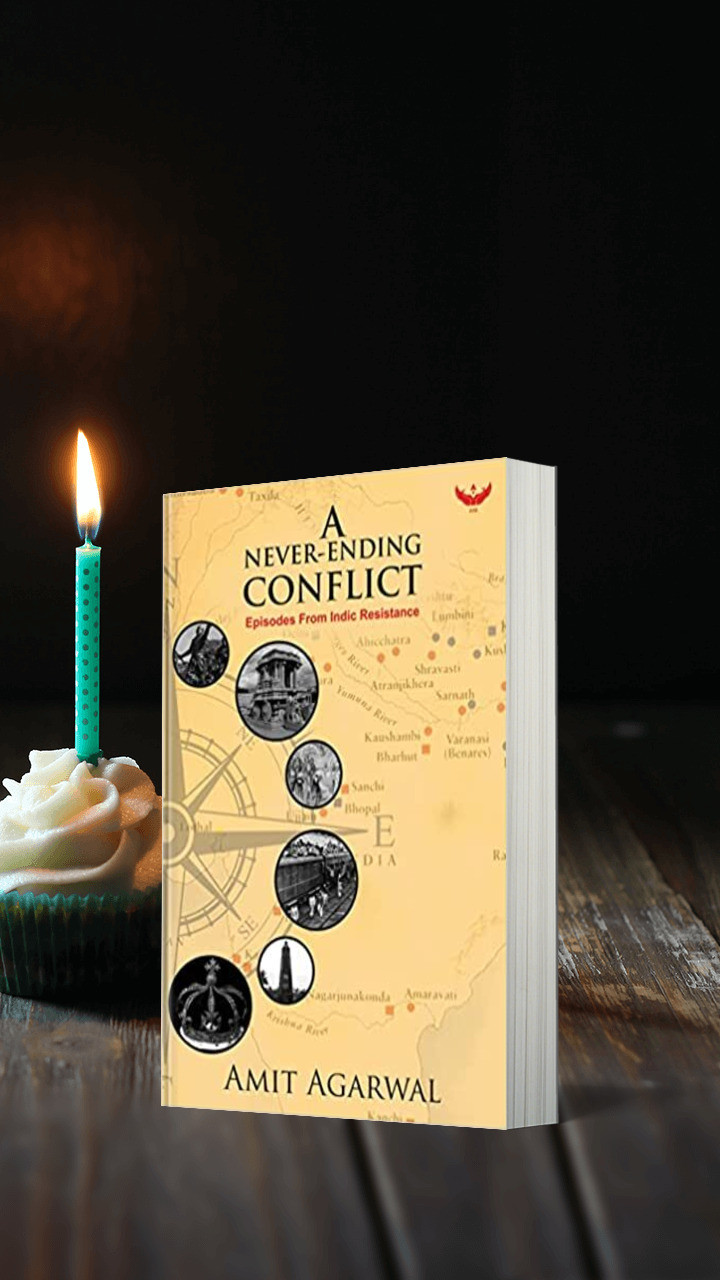How Hindus Propped up the Tipu Sultan Empire All Along
- In History & Culture
- 12:27 AM, Sep 01, 2023
- Amit Agarwal
It will be futile to repeat here that in South India, no one tortured Hindus like Tipu Sultan from 1782-1799. Lakhs of people were murdered and converted; women were raped, men were circumcised and temples were destroyed. The dreaded Mappila riots of 1921 can also be traced to the conversions by Tipu. In many ways, he was way worse than Aurangzeb, Mahmud Ghaznawi, Taimur and Nadir Shah.
However, he, like other Islamic invaders, could not have survived for so long without active help from Hindus, even when he was on a killing spree of Hindus. The chief among them was Diwan Purnaiyya.
Mysore was being ruled by Wodeyars in those days. Like other Hindu kings of yore and even, today, he had a secular outlook and gave commanding positions in the army to Muslims. One such fellow was Tipu’s father, Hyder Ali. Since he was illiterate, he was helped by a Brahmin named Khande Rao in accounting for the plundered money. Rao helped him accumulate money through various means, making Ali buy more and more arms and ammunition for himself.
Then a golden opportunity struck. In 1757, to resist the invasion of the Zamorin of Calicut, the Palakkad Raja sought the help of Hyder Ali, who then led campaigns against the Zamorin of Calicut and integrated it into Mysore. Similarly, a host of other states in the Malabar region were also unified with Mysore. The king of Mysore, Krishnaraja Wodeyar II, was in the seventh heaven because of the sudden expansion of their kingdom, which he didn’t even think about in his dreams. Little did he know that one day, not far in the future, Hyder Ali would swallow him in one go.
Mighty elated, the king rewarded Hyder Ali by granting him the title of Fath Hyder Bahadur or Nawab Hyder Ali Khan. Ali had a meteoric rise so far, and it made the queen mother anxious, who, with the help of Khande Rao, who had to switch alliances, imprisoned Hyder Ali with his teenage son Tipu.
In those days, Marathas were ruling India from Afghanistan to Madurai and even the once-mighty Mughals were at the mercy of the Peshwas. Wodeyars were small fry in comparison, bearing the brunt of repeated Maratha attacks.
Unfortunately for India, the Marathas suffered a crushing defeat at the hands of Abdali in the third battle of Panipat in 1756 and had to remove their forces from Mysore and other places. In this sudden development, Hyder Ali got his chance, overthrowing the Wodeyars and imprisoning them in their own palace in Seringapatam. The king should have known that secularism never pays, had he read the correct history.
Hyder Ali became Mysore's king in 1761, and in the next four decades, the father-son duo would change the demography of South India. The soul of that part of India would shiver and wither under the unprecedented torture. Islamic cruelty would not know any limits and would be relentless against Hindus and even Christians.
In 1766, Hyder Ali returned to Malabar, this time at the invitation of the Hindu raja of Cannanore, who sought independence from the Zamorin, the ruler of Calicut. Zamorins were crushed and the king himself set his palace on fire and burnt himself. In all his expeditions, his son Tipu accompanied him, learning the ropes of the art of war with attendant cruelty. In 1780, Hyder Ali was diagnosed with cancer and soon became bedridden.
At this point, in the early 1770s, Purnaiyya made the entry. He was a Maratha Brahmin, well versed in accounting and became diwan in Hyder Ali’s administration. Probably Ali was missing the services of his friend-turned-foe, Khande Rao. Soon, Purnaiyya would make him forget Rao. In 1782, when Ali died, Tipu was in Malabar, plundering the countryside and raping women, acts that every Muslim invader was fond of.
At this point, Purnaiyya would have installed Wodeyars again, taking advantage of Tipu’s absence. But here, loyalty and magnanimity prevented him from making a rational decision. He kept the news of his death under wraps and informed Tipu to come back immediately. In those few days, Purnaiyya conducted the durbar as if nothing had happened, without letting anyone know that the Sultan had died.
Tipu rushed back and became the sultan of Mysore without any hiccups, with the blessings of Purnaiyya. On his anointment, he presented Tipu Sultan with 90,000 soldiers, three crore rupees, and invaluable ornaments made of precious stones. So happy was Tipu that he became tempted to rule as the Emperor of South India.
Purnaiyya was amply rewarded for his loyalty, as during the entire period of 16 years of Tipu Sultan’s rule, the only Hindu occupying any important official position was Purnaiyya. He, in turn, took care of his maalik in every way.
Tipu Sultan reigned over his empire for only sixteen and a half years, from 1782 to 1799. Malabar's territory was effectively under his control for only eight years. There would not have been as many Muslims in Kerala and Karnataka, had he not enlisted the help of the cunning Purnaiyya. Hindus would not have become poorer or fewer in number. Never in his life did Purnaiyya request Tipu to stop massacring Hindus and destroying temples. At one count, he demolished at least 8,000 temples and converted 4 lakh Hindus and Christians in his two-decade rule.
Like other invaders, it was not difficult to defeat them with the correct strategy. Sometime in 1790, Tipu had attacked Travancore and his army was camping on the banks of the Alwaye River before launching the attack on Nedunkotta Fort. The Travancore army was no match for the huge Mysore army and the monsoon season was four months away. Therefore, under the guidance of the Prime Minister of Travancore, a temporary bund was hurriedly constructed way up on the stream. When the Mysore army launched its assault and Nedunkotta was penetrated, the temporary bund was breached in the midst of heavy fighting, causing an unexpected flood that drowned many Mysore soldiers and rendered the gunpowder wet and useless.
The result was panic and confusion in the Mysore army. The victorious Nair forces of Travancore inflicted huge casualties on the invading army. The wounded Tipu was lying unconscious on the battlefield when he was rescued by a silly Nair soldier and deposited in the Muslim camp. It is recorded in Travancore history and confirmed by local folklore. Exactly 600 years ago, Mohammed Ghori was lying unconscious on the battlefield and Prithviraj Chauhan did not find it expedient to kill him then and there. Ghori’s soldiers then got the opportunity to take him back to Ghazni and the rest is history. Hindus are still paying the price for the folly of Prithviraj.
Alas, Hindus would prove to be poor learners as the next nine years of Tipu’s rule would prove costly to the Hindus of Kerala.
Purnaiyya participated in every military campaign led by Tipu against the Hindu kings of Kerala. However, in the last and fourth Anglo-Mysore war, Tipu asked Purnaiyya to take care of his eldest son at home. Tipu was defeated and killed by the British in 1799.

The Hindus breathed a big sigh of relief. However, even then, Purnaiyya still did not have his fill, as he wanted to install Tipu’s eldest son as the next Sultan, but the British would have none of it. Finally, the child king, Krishnaraja Wodeyar III, became king of Mysore. Since Tipu fought with the British, he was declared the first freedom fighter of India, of which seculars never tire of singing. It is another matter that he took the help of the French and even sent his ambassadors to Turkey and Kabul to request that the Sultans invade India.
He became a firm believer in Hindu astrology when, earlier, many of the predictions by Brahmins came true; he spared two temples at Seringapatam Fort and gave some grants too. The leftists also went gaga over it and presented it as evidence of his love for Hindus.
At every juncture, Hindus kept helping Tipu, but he never returned the gesture. No other community would be so foolish for so long.
Unfortunately, the situation has not changed at all, even today, with Hindus still failing to exhibit shatrubodh.
All the images are provided by the author.
Disclaimer: The opinions expressed within this article are the personal opinions of the author. MyIndMakers is not responsible for the accuracy, completeness, suitability, or validity of any information on this article. All information is provided on an as-is basis. The information, facts or opinions appearing in the article do not reflect the views of MyindMakers and it does not assume any responsibility or liability for the same.







Comments